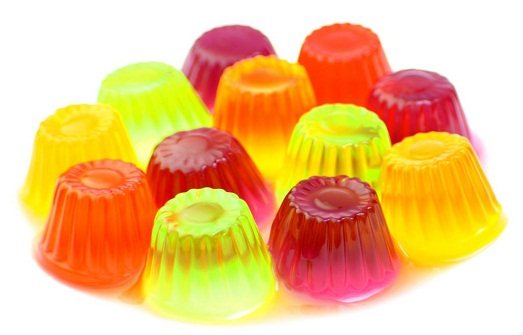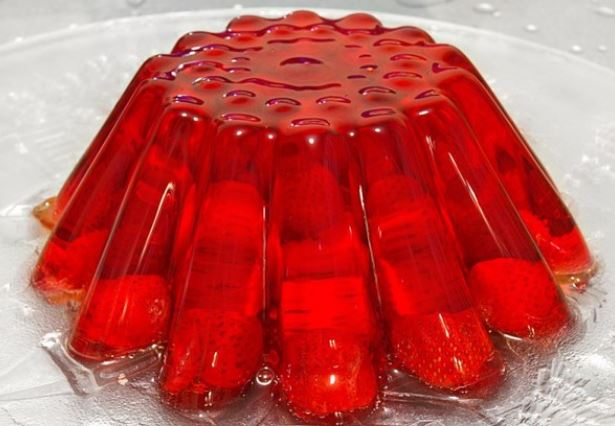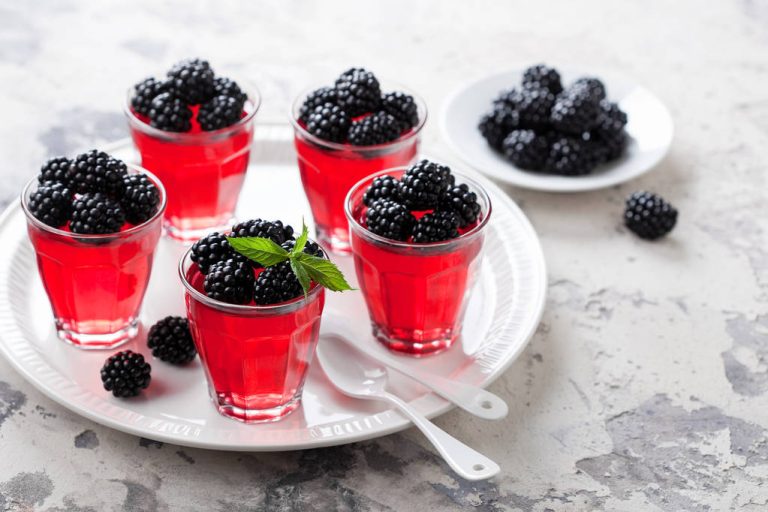Gelatine is not only found in gummy bears, but also in many other everyday products. In this article you will find out what makes the gelling agent gelatine so problematic.
In the supermarket you can find gelatine in powder form or as thin sheets. In addition, the animal gelling agent is found in a number of different finished products. As a rule, gelatine is used as a gelling agent (e.g. in gummy bears). However, companies also use gelatin to improve the volume or texture of foods. This is particularly the case with reduced-fat diet products.
You can find gelatine in these products, among others:
Creams, yoghurt and quark dishes
glaze
Sweets (like marshmallows, liquorice, or chocolate kisses)
granola bars
Aspic and aspic
animal products
Capsules for medicines or dietary supplements
Cosmetic products (such as shower gels, face creams or masks)
The food industry also uses gelatin as an aid to clarify juice, wine, cider, vinegar and lemonade. The mixture of animal substances can also be found in foreign beer. In these cases, the animal substance does not have to be indicated on the list of ingredients. After all, undeclared gelatine can also be found in other products where you wouldn’t expect it. For example, it is part of rolls of film, coated printer paper or match heads.
Gelatine: Made from animal materials

Gelatine is a mixture of substances made from proteins of animal origin. As a rule, the substances come from the connective tissue of slaughtered animals. For the production, slaughterhouse waste (such as hides, bones, tendons, cartilage or ligaments) is boiled in water. The final gelatine product then consists of…
84 to 90 percent animal protein
one to two percent of mineral salts,
to a tiny proportion of water.
According to the manufacturer, the majority of gelatine in Europe comes from pigs. A small part is also made from the carcasses of cattle and fish. As a rule, companies do not have to state which animal the gelatine comes from, according to the consumer advice center. Information is only mandatory for the rare fish gelatine.
Criticism of gelatine: problematic animal husbandry
Since gelatine is made from the remains of killed animals, it is extremely problematic:
Animal husbandry: Especially the factory farming and a lack of species-appropriate animal husbandry cause criticism. This is particularly the case with gelatine from conventional animal husbandry. Here the needs of the animals are often completely ignored. Injured or even dead animals often lie in the middle of the barn between the other animals. Even an organic seal on gummy bears with gelatine is not necessarily a guarantee for the well-being of the animals. You can find out more about this topic here: What do the animals get from organic animal husbandry? Another problem with gelatine is that manufacturers produce the mixture from different slaughterhouse waste. So you never know for sure which region or farm the gelling agent comes from.
Transport: In order to be slaughtered, pigs, cattle etc. sometimes have to travel long distances to the nearest slaughterhouse. The animals are crammed together in a very small space, where they have to endure hours or even days. Injuries, dehydration, stress or overheating occur time and again when transporting animals. Animals often die during or immediately after transport.
Slaughterhouse: During slaughter, workers or machines stun the animals with gases, for example. Animal rights activists criticize that the animals suffer from severe shortness of breath and slowly and painfully lose consciousness. Also, not all animals are adequately stunned, leaving some fully conscious when the slaughter machines cut their artery or plunge them into the hot scalding bath. A lack of controls and violations of animal welfare are repeatedly uncovered.
Other disadvantages of gelatine: eco-balance, water consumption & Co.

The production of animal products such as gelatine brings with it other ecological problems:
Large areas are required for the cultivation of animal feed, on which food for humans could be planted directly. In this way, many more people could be fed, according to studies.
As more and more land is needed for forage, humans are clearing more and more forests, destroying wild grass and forest areas and driving animals out of their habitat.
Due to the transport of animals and the import of animal feed, gelatine also has a very poor eco-balance, as there are high levels of CO2 emissions in the manufacturing process. Factory farming is thus significantly involved in progressive global warming.
Agriculture also uses a lot of water for the cultivation of animal feed and the supply of animals for slaughter. However, this is another important resource that is becoming increasingly scarce (more on water scarcity).



